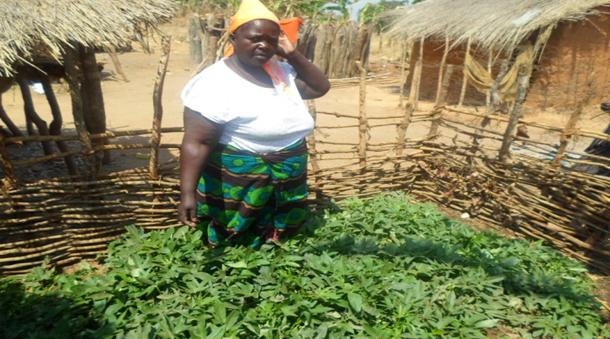Agriculture accounts for about 18 – 20 percent of the Gross Domestic Product (GDP) and provides the livelihood for more than 50 percent of the Zambian population. In spite of the important role that the sector plays in the country’s economy, the agricultural production has remained low (CSPR, 2000) thereby negatively affecting food and nutritional Plate: It provides a livelihood for more than half of the population, including the rural poor, who constitute 83% of the Zambian population living in poverty (CSO, 1998; NACP, 2003). The agricultural sector absorbs 67% of the labour force and is the main source of income for rural women who constitute 65% of the rural population (NACP, 2003); Agriculture in Zambia generates between 18 and 20% of the GDP. Agricultural growth benefits the poor most a 1% increase in agricultural yield reduces the percentage of people living on less than 1$ per day between 0.6 - 1.2% (DFID, 2003).

The major problems causing low food production in Zambia are declining soil fertility, low use of external inputs, loss of soil organic matter and soil structural damage due to poor land husbandry practices. Other constraints are natural disasters such as flash floods and droughts, limited access to capital, poor information on appropriate technologies and poor marketing arrangements.
Over 1.35 million Zambians (10% of the analyzed population) are experiencing severe food insecurity (IPC Phase 3 - Crisis) between July and September 2022, due to high food prices and climatic shocks This population requires urgent humanitarian action to reduce food gaps, protect and restore livelihoods, and prevent acute malnutrition. (IPC Acute Food Insecurity Analysis July 2022 – March 2023). To respond to this food insecurity crisis, RFDP Zambia is striving to improve food security in Zambia through promoting sustainable and climate smart Agriculture.
Rural Communities in the 10 provinces of Zambia are heavily dependent on small holder agriculture. With increased prices of farming inputs such as fertilizers and seed. Sustainable and smart Agriculture proves to be the means of enhancing meaningful production of food in rural Zambia for a more food secure household. Most essential crops such as Maize, soya beans are seasonal in Zambia. Improved production saves households by reducing their risk of food insecurity during these times of the year.
RFDP works to bridge the capacity and skills gap in the small holder farmers in sustainable agriculture by incorporating smart agriculture systems and technologies and implementing the following interventions;
Orange Fleshed Sweet Potato Project
The Overall Objective of this project was to contribute to increased frequency of intake of vitamin A rich foods, amongst 2,750 households especially of women and children under five years of age, and improve overall household food security and diet diversification in Lundazi and Lumezi Districts.
The project reached over 2,750 households and 70% of the project beneficiaries were women. The project contributed to the increase of household income levels, production levels at farm level and contributed to the decrease in post-harvest losses.
This was achieved through the effective dissemination of pro-vitamin A rich, orange-fleshed sweet potato varieties and improved production, conservation, and utilization techniques linked to increased nutritional knowledge. The project addressed the following outputs.
Project Outputs